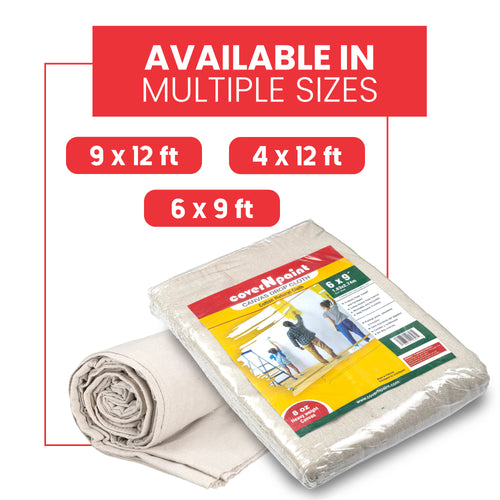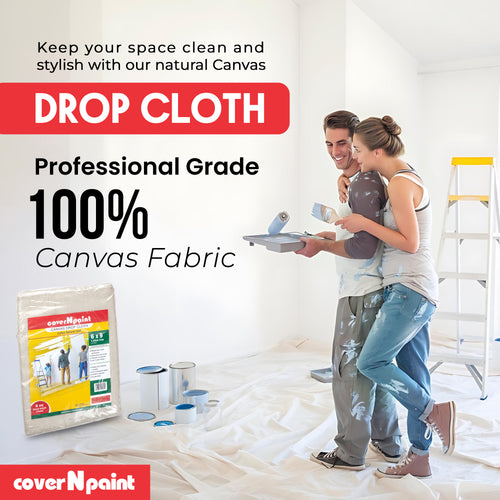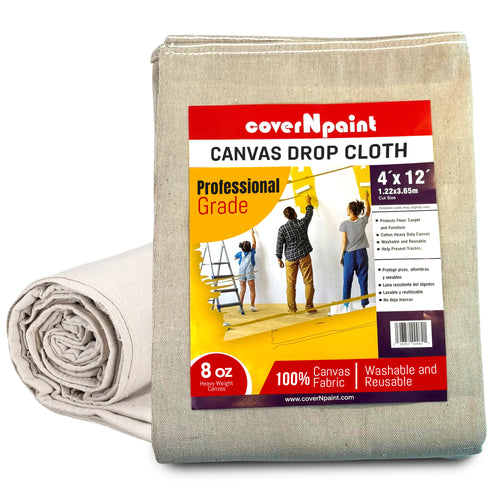Selecting the appropriate materials is essential when starting outdoor projects in order to guarantee cost-effectiveness, longevity, and functionality. Tarps made of canvas paint are frequently thought of for a variety of purposes, but are they appropriate for outdoor projects? This article examines the suitability, advantages, and possible disadvantages of applying Canvas Paint Tarps outside.
What Are Canvas Paint Tarps?
Canvas paint tarps are large sheets made from heavy-duty cotton fabric, often treated with a water-resistant coating. Originally designed to protect surfaces from paint splatters, these tarps are durable and reusable, making them a popular choice for both professional painters and DIY enthusiasts.
Types of Canvas Tarps
Canvas tarps come in various types, including untreated, treated, and fire-retardant versions. Treated canvas tarps have additional coatings to enhance water resistance, mildew resistance, and UV protection, making them more suitable for outdoor use.
Advantages of Using for Outdoors
Durability and Strength
Canvas is known for its durability and strength. Unlike plastic tarps, which can tear easily, canvas tarps are robust and can withstand significant wear and tear, making them ideal for outdoor projects that require long-term coverage or protection.
Breathability
The breathability of canvas tarps is one of their best qualities. By doing this, moisture buildup beneath the tarp is avoided, which can inhibit the spread of mold and mildew. This is a big plus for outdoor tasks, especially the ones that involve plants or other moisture-sensitive materials.
Reusability
Because they are reusable, canvas tarps reduce waste and offer an economical option for outdoor projects that call for frequent use. Compared to single-use plastic tarps, they are more sustainable because of their durability.
Common Outdoor Uses for Canvas Drop Cloth
Covering the Ground for Gardening
For weed suppression and soil protection in gardening projects, canvas tarps can be utilized as ground cover. Because of their permeability, the soil beneath them stays healthy and well-aerated, which encourages improved plant development.
Temporary Shade and Coverage
Canvas tarps can be used for camping, building sites, and outdoor events to make makeshift shelters or offer shade. Because of their resilience, they can withstand wind and rain and provide dependable protection.
Safeguarding outdoor equipment and furniture
For shielding outdoor furniture, barbecues, and other equipment from the weather, canvas tarps work great. These things stay dry and protected from UV rays thanks to the water-resistant coating.
Choose Durable Drop Cloth from CoverNpaint
Choosing a trustworthy supplier is essential when looking for premium canvas tarps for outdoor tasks. Known as one of the top suppliers of canvas drop cloths in the United States, CoverNpaint provides a selection of high-quality canvas tarps that are built to last. Their canvas tarps are renowned for their outstanding quality and sturdy design. They are also treated to offer improved water resistance and UV protection, which makes them perfect for a variety of outdoor applications.

Drawbacks of Renovation Tarps Outdoors
Weight and Handling
Canvas tarps are heavier than their plastic counterparts, making them more challenging to handle and install, especially for large projects. This can be a drawback for those looking for a quick and easy solution.
Maintenance Requirements
Canvas tarps are strong, but their durability depends on careful care. To keep them water-resistant, this entails routine cleaning and re-treating. Neglecting upkeep can result in the growth of mold and decreased efficacy.
Cost Considerations
Canvas tarps are generally more expensive upfront compared to plastic tarps. While their reusability and durability can offset this cost over time, the initial investment may be a consideration for budget-conscious users.
How to Choose the Best Floor Mat
Assessing Your Project Needs
Before selecting a canvas tarp, assess the specific needs of your outdoor project. Consider factors such as size, weight, and the level of exposure to elements like rain, sun, and wind.
Treated vs. Untreated Canvas Tarps
For most outdoor projects, treated canvas tarps are preferable due to their enhanced water and UV resistance. However, if you require a more breathable option, an untreated canvas tarp might be suitable, provided it is used in a way that minimizes exposure to moisture.
Quality and Thickness
Select a tarp that is the right thickness for the job at hand. Although thicker tarps are heavier and more difficult to manage, they provide superior protection and durability. Make sure the canvas is of a good caliber to prevent tearing or premature wear.
Tips for Using Painters Drop Cloth
Proper Installation Techniques
Ensure the tarp is securely anchored to prevent it from blowing away or shifting during use. Use sturdy ropes, bungee cords, or stakes to keep it in place, especially in windy conditions.
Regular Maintenance
Regularly inspect the tarp for signs of wear and tear. Clean it as needed and re-treat it with a water-resistant coating to maintain its protective properties. Store it in a dry place when not in use to prevent mold growth.
Creative Applications
Don’t be afraid to think outside the box when using canvas tarps. They can be used for a variety of creative outdoor applications, from creating art installations to building temporary play areas for children.
Paint tarps made of canvas are an excellent addition to many outdoor projects because of their durability and versatility. Because of their robustness, breathability, and reusability, they are an affordable and environmentally responsible option. Nevertheless, to guarantee the tarp's durability and efficacy, you must take into account the particular requirements of your project and maintain it appropriately. You may optimize the advantages of employing canvas paint tarps in your outdoor efforts by making an informed decision and being aware of the potential negatives.













